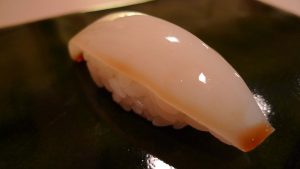Favorite Texts
We read a lot of great, informative, and unique texts for class. I think my favorite assigned text was Pete Wells’ review of Guy Fieri’s restaurant. Although I didn’t like how harsh and sarcastic the author was towards Guy Fieri (who I enjoy watching on television), I thought the language was pretty funny and unique. It took the meaning of “rhetoric of food” to another level by combining a restaurant review with a comedy vibe. It was also quite informative even though it was mainly comedic. It showed a lot of the glaring issues of Fieri’s restaurant, and a small summary of various judgement factors was included at the end.
My favorite text that I chose to read on my own was the Lifehacker article on sushi etiquette that I used for my annotated bibliography. I really love how compact, versatile, and useful this graphic is. As someone who loves sushi (it’s my favorite food), I have always wanted to improve my etiquette when eating so that I can have a nicer experience. This graphic really helps achieve that goal, and I know I’m not the only one in the class who thinks so. When I presented my annotated bibliography, the two classmates who I presented to both enjoyed this text the most out of all the texts I included.
What Does the Rhetoric of Food Mean?
When I started this course, my only knowledge of food rhetoric was recipes and restaurant reviews. This course really expanded my interpretation and understanding of how many texts the rhetoric of food truly encapsulates. As I noted above, food rhetoric can include but is not limited to comedy, drama, theoretical analysis (Consider the Lobster), and instructions (such as recipes). The medium that food rhetoric takes on is also very diverse. Images, videos, and text are all thoroughly represented in food literature.
